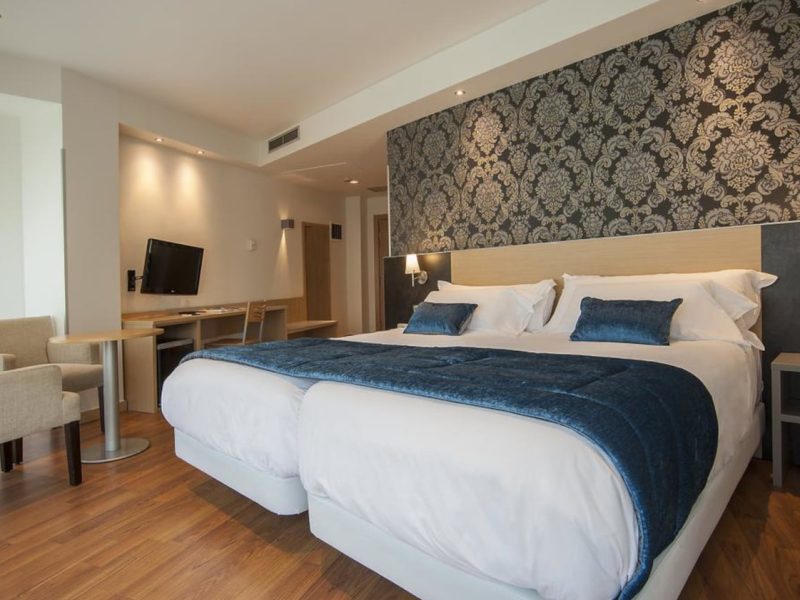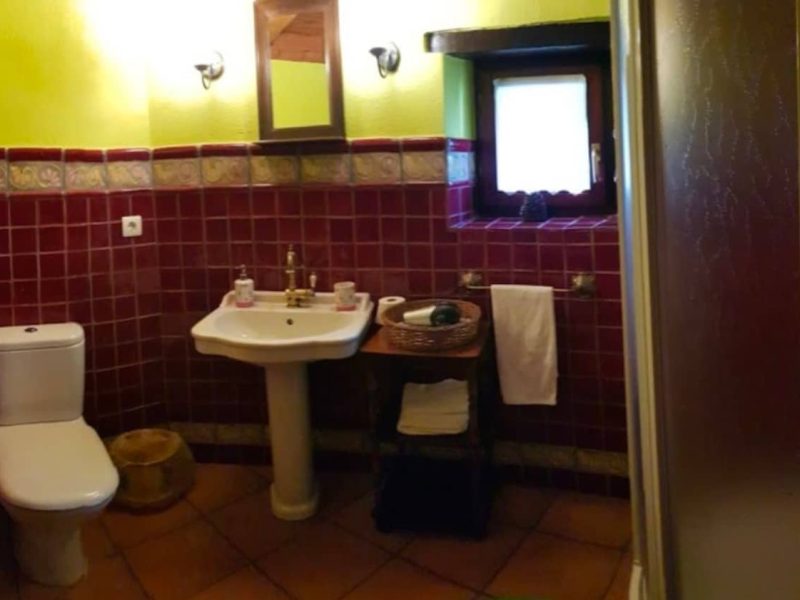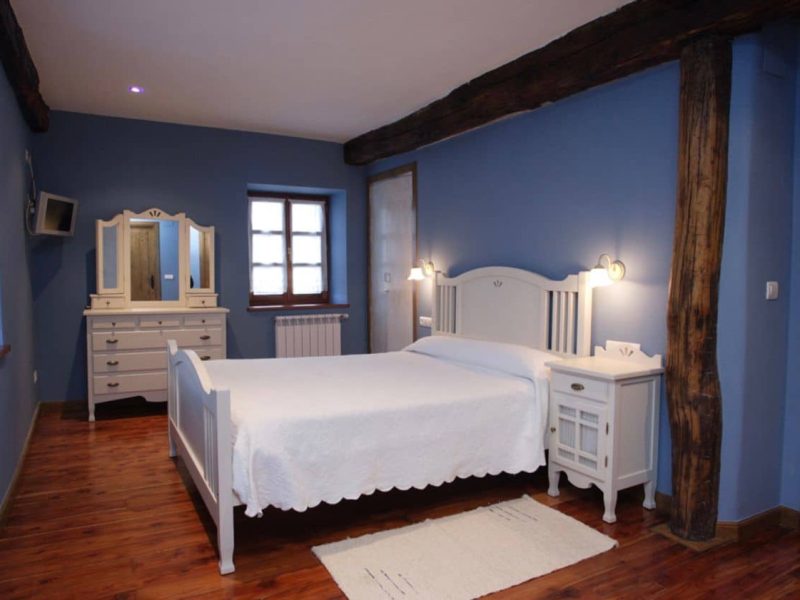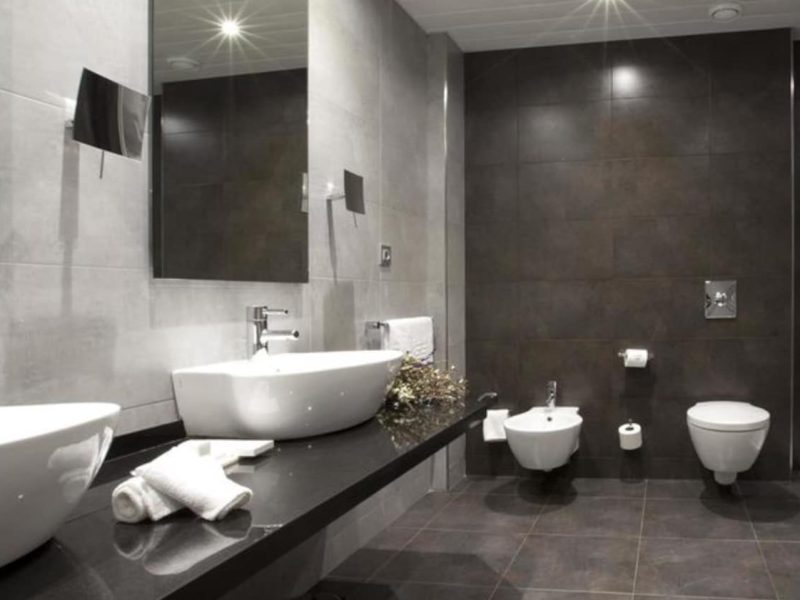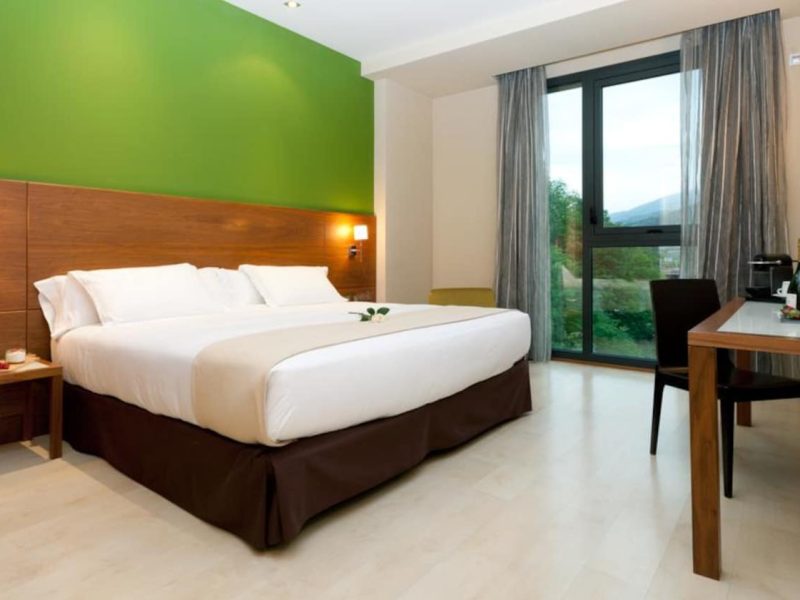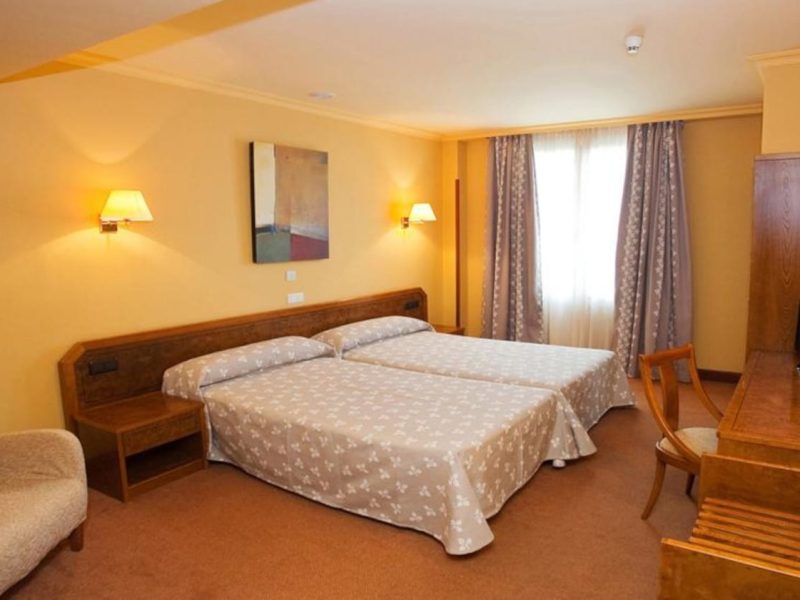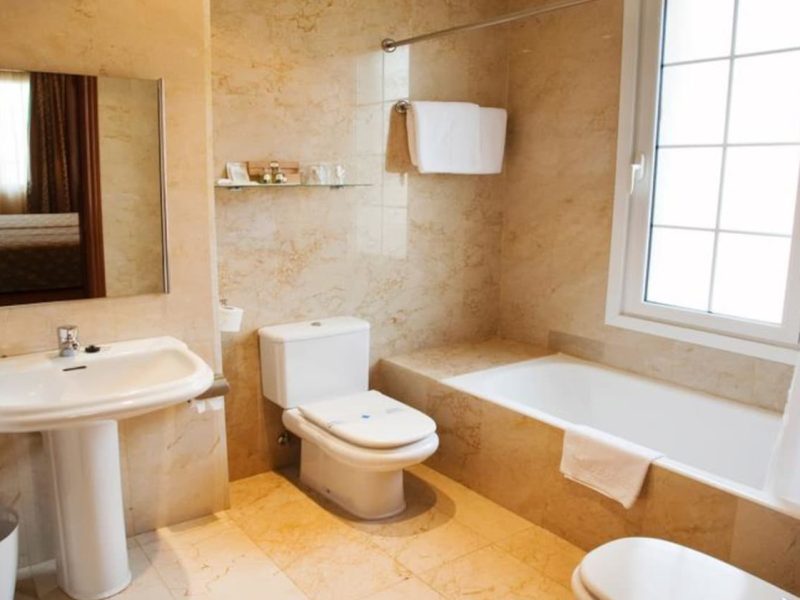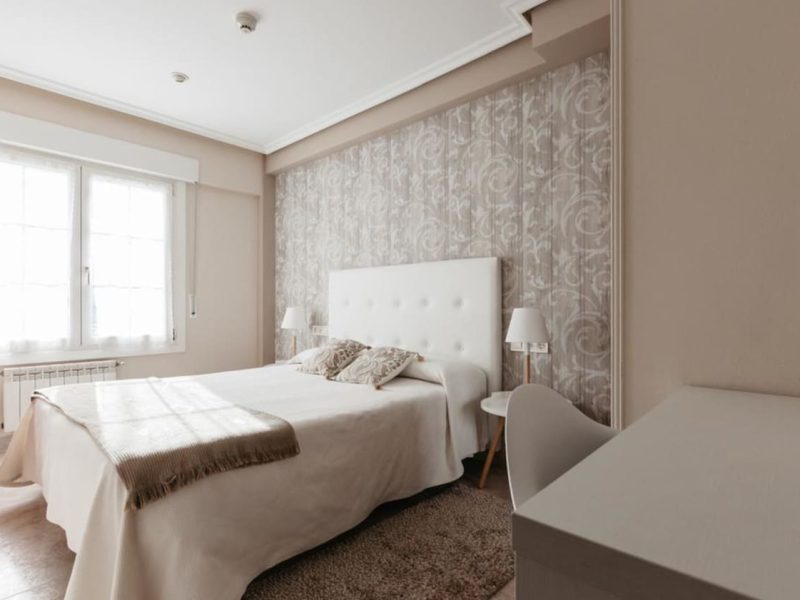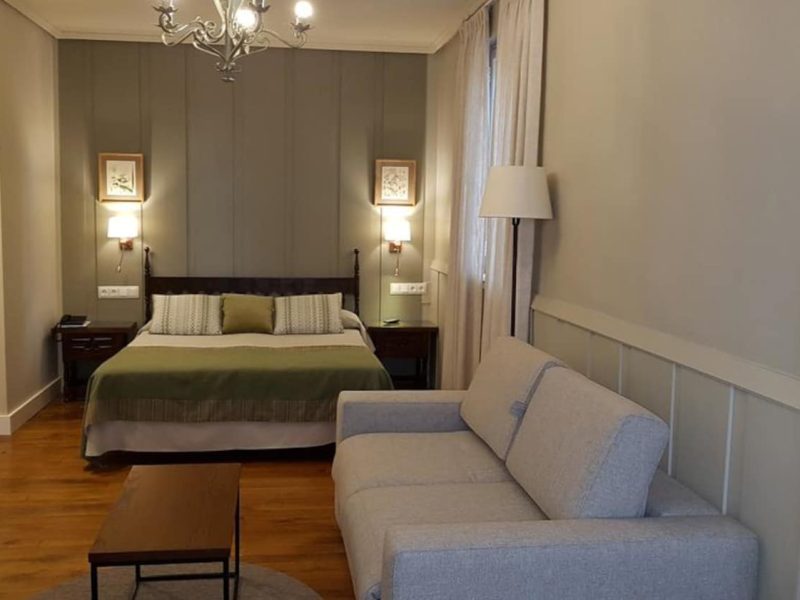Camino de Santiago from Irún to Bilbao.
Every great journey begins with a single step.
The Camino del Norte from Irun organized
A unique journey
Your journey to the European essence.
Way
Plongez dans la beauté côtière et la culture basque
Do you want to embark on a journey that will take you along the Cantabrian coast, passing through picturesque towns and cities full of history? Imagine walking along paths that border the Cantabrian Sea, enjoying impressive views and discovering the rich Basque culture.
From majestic cliffs to dream beaches, the Camino del Norte from Irún to Bilbao is the adventure you are looking for. Your trip to the heart of the Basque Country and Cantabria.

Your adventure starts here
If you want a unique experience, we present a tour that will allow you connect with yourself and with the essence of European tradition. From the interesting Basque culture to the exquisite local gastronomy, each day on this stretch will give you unforgettable moments that you will treasure forever in your retina.
For those seeking personal enrichment, like-minded company and unique experiences, we are here to make your dream come true. Your peace of mind is our priority: we provide all the necessary services so that you only have to worry about enjoying your journey.

More details
Origin
Irún

Destination
Bilbao

Duration
8 days / 6 nights / 6 stages

Total Kms
151

Price / person
Consult
Book now!
Please indicate the number of people

Services
Services
Complete and customizable services for a worry-free experience on the Camino de Santiago.
Services Included
- Accommodation in selected hotels, rural houses and hostels.
- Special breakfast to start your days with energy.
- Travel assistance insurance valid throughout Spain.
- Assistance vehicle available in case of emergency during your journey.
- Digital informative dossier of the Camino to keep you informed.
- Telephone assistance en route to answer any questions.
- Luggage transfer at each stage: 1 suitcase per person with a limit of 20 kg!!
- Special gifts, including the Pilgrim's Credential, the Pilgrim's Scallop and a typical Basque product.
- No cancellation fees up to 10 days before starting the Camino.
- VAT included in the price.
Optional Services
- Possibility of dividing long stages into additional days.
- Extra night in Bilbao.
- Cancellation insurance for residents in Spain and abroad.
- Day trips by bus to destinations of interest. Check our excursions for more details.
- Option to carry additional luggage if you need more than 1 suitcase per person.
Remember that the cost of the optional services chosen will be added to the base price of your route. We are committed to making your pilgrimage an unforgettable and worry-free experience.
Stages of the Camino del Norte from Irún to Bilbao
Your trip in 7 stages (plus arrival and farewell): Discover the Camino del Norte, from Irún to Bilbao.
Day 1: Arrival to Irún. Lodging.
Welcome to the beginning of your journey. Get ready for an unforgettable adventure!
Day 2: Stage from Irún to San Sebastian (27.46 km)
- Duration: 7h
- Difficulty: Medium
Breakfast and start of the stage of our way of Santiago from Irún.
Stage that runs between the coast and the mountain. Once we arrive at the Sanctuary of Our Lady of Guadalupe, we will go through the foothills of Mount Jaizkibel, through tracks and wooded areas. We will arrive at Pasajes de San Juan, where we will cross the estuary to Pasajes de San Pedro, by boat.
The entrance to San Sebastián will give us beautiful views of the bay of San Sebastián. For lovers of good food, as we pass through the city of San Sebastian within a radius of 25 kilometers, there are 18 Michelin stars concentrated. You can also enjoy their excellent cuisine with their famous pintxos.
Arrival in San Sebastián. End of the stage.
Day 3: Stage from San Sebastian to Zarauz (22.72 km)
- Duration: 5h 30m
- Difficulty: Low
Breakfast and start of the stage.
The exit from the city will offer us magnificent views from Mount Igeldo, which we will access as soon as we start the stage.
Stage similar to the previous one, with wooded areas and dirt tracks, for most of the route.
Orio, a coastal town par excellence, is the town before our arrival in Zarauz.
Arrival in Zarauz. End of the stage.
Day 4: Stage from Zarauz to Deba (21.55 km)
- Duration: 5h
- Difficulty: Low
Breakfast and start of the stage.
Stage that runs very close to the sea, halfway up the mountain, with constant ups and downs.
Magnificent views and important coastal towns, such as Guetaria and Zumaia, we will find until we reach Deba.
Arrival in Deba. End of the stage.
Day 5: Stage from Deba to Markina (22.53 km)
- Duration: 5h 30m
- Difficulty: Medium
Breakfast and start of the stage.
Stage with absence of population centers and with many typical farmhouses and large wooded areas, will accompany us throughout the route.
We highlight the Calvary of Maia and the area of the Kostolamendi Farmhouse, as the highest point of the stage.
Arrival in Markina. End of the stage.
Day 6: Stage from Markina to Guernika (25 km)
- Duration: 6h 15m
- Difficulty: Medium
Breakfast and start of the stage.
Numerous rural centers, some with history, such as Bolibar, mark this stage, which runs through terrain similar to the previous stage, with some medieval roads, such as the one that gives access to the Collegiate Church of Ziortza, and with the final surprise, before arriving in Guernika, of having entered the Urdaibai Biosphere Reserve.
Arrival in Guernika. End of the stage.
Day 7: Stage from Guernika to Bilbao (31.5 km)
- Duration: 8h
- Difficulty: Medium
Breakfast and start of the stage.
Stage with two faces, like all those that end in large population centers. Half of it offers the bucolic and rural environment of our entire journey since we started our way in Irún, and the rest we find the industrial development typical of large cities.
Arrival in Bilbao. End of the stage and of the way of Santiago from Irún. If you have more days, you can extend your way of Santiago from Bilbao.
RECOMMENDATION
For those with little physical preparation or who prefer to undertake the stage in a more calm and relaxed manner, it would be advisable to divide the stage into two days:
Stage from Guernika to Lezama (20.7 km)
Stage from Lezama to Bilbao (10.8 km)
Day 8: Breakfast - End of our services
We’re coming to the last day of your trip! Enjoy breakfast and conclude this unforgettable experience with us.
Thank you for being part of this adventure!
This itinerary will take you through the most popular stages of the Camino Frances and allow you to experience the beauty of Galicia and the culture of the Camino de Santiago. Make sure you book accommodation in advance as it can get busy, especially in peak season. Have a good trip and good Camino!
Alojamiento
We constantly strive to guarantee the best experience for our clients, prioritizing your rest and comfort.
For this reason, we carefully select the accommodations we offer, ensuring that they have private rooms with own bathroom and all the necessary services for a perfect stay. We want to emphasize that we do not use hostels for your nights of rest.
Since these accommodations have limited places, we will confirm the exact name once you have made your reservation and we verify availability for the selected dates. Your satisfaction is, and always will be, our priority.
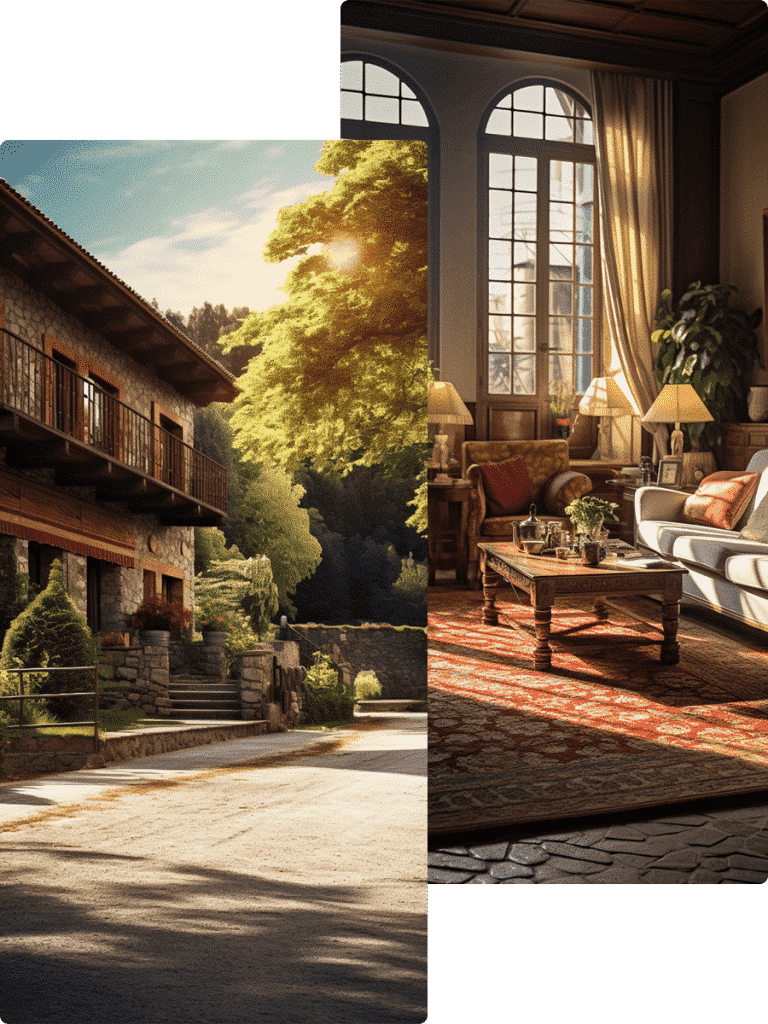
Frequently Asked Questions
What to eat and typical dishes on the way of Santiago from Irún to Bilbao?
Having a travel itinerary will always be the best recommendation you can follow before embarking on a new adventure, regardless of the type or company; it will help you prepare in all aspects, and this, of course, also applies to the Way of Santiago.
Once the route and accommodation are chosen, the next step is to establish which are the most suitable places to eat and of course there you should always make special emphasis, considering that it is necessary to replenish the caloric expenditure after long days of walking.
Typical dishes of this stretch
For us, there is no better way to get to know a certain place than through its typical foods and this stretch from Irún to Bilbao has true delights that you must not miss for any reason.
Among the typical dishes that are worth trying again and again are:
Pintxos
Even if you haven’t tried them, you’ve probably heard of them more than once. First of all, we must make it clear that the pintxo is not a dish as such, but on the contrary, it is served as an appetizer and also, the correct way to eat it is in one or two bites, it all depends on you.
It is typical of the Basque Country, where it is usually served on a piece of bread, always accompanied by a glass of wine or a beer, according to the customer’s preference.
When it comes to variety, it is very extensive. They are usually consumed cold or hot, the latter prepared on the spot. You can find them with seafood, stuffed peppers, fried, anchovy omelets, or some spicy potatoes.
Cod Pil Pil
This is a true delicacy of Basque cuisine. Its preparation is relatively simple, as it consists of cod prepared in olive oil, chili peppers, and garlic, although it has a little secret.
The key to the dish undoubtedly lies in the sauce; once it is in the casserole dish, the sauce must be bound in a traditional and correct way, stirring constantly until the perfect texture is achieved. On the other hand, but no less important, it is essential that the cod loins are extremely fresh.
As a curious fact, the name of this dish comes from the sound produced when confiting the cod.
Txangurro
If you are a lover of seafood flavors, without a doubt, this is a dish you must try. Txangurro or changurro in Spanish is the name given to the spider crab in the Basque Country, which is nothing more and nothing less than a migratory type of crab that is large and is usually served with its shell.
The meat is extracted and cooked with specific ingredients, among which onion, tomato, leeks, and some other vegetables stand out. It is baked and is a real delight, not in vain is one of the most popular among the typical food of San Sebastián.
Marmitako
Another of the star dishes in San Sebastián, as well as being popular in regions of Asturias and Cantabria. It is a stew made from white tuna or bonito.
The sauce in which it is cooked is made from peppers, tomato, and onion, that is, quite basic but extremely traditional.
Where to eat on the Northern Way from Irún?
Best Places to Eat from Asturias to Santiago
This stretch representing from Asturias to Santiago is filled with beautiful landscapes, charming towns, and friendly locals, not to mention, of course, its delicious gastronomy.
When you’re traveling along this route, there are ideal places to enjoy typical food and wonderful service, such as:
Mikel Restaurant (Irún)
Located at number 59 on Iparralde Avenue in Irún, they specialize in local cuisine par excellence, although their extensive menu adapts to all tastes without a doubt, and for pilgrims, they offer a daily menu that is more than convenient.
The prices are quite reasonable considering the quality and quantity they serve you; here, you will leave more than satisfied, apart from the fact that the service is extremely dedicated, making you feel like family every time.
Astelena 1997 (San Sebastián)
Located in the well-known old part of San Sebastián, just a few meters from the Kursaal. This restaurant focuses on modern cuisine but based on the most traditional recipes of the region, albeit with some particular touches of the house.
Astelena enjoys a wide and varied menu, including options for diners with special dietary requirements or, if you wish, for large groups, the latter by prior notification, of course.
The staff working here always strive to offer you very dedicated and friendly service.
Txaporta Restaurant (Gernika)
In Gernika, specifically at 33 Goikoibarra Kalea. Txaporta is a place where you will always find delicious dining options, no matter the time or day.
To begin with, it is necessary to highlight its spacious facilities, so even if you arrive at peak hours, you will surely have a place and be attended to as you deserve.
Here, everything comes together to make you feel at home, starting with the attention of the staff, dedicated and very friendly, and the menu is extremely varied with options for all tastes, from the most traditional to the avant-garde.
Batzoki Bilbao
On Henao Street, specifically next to the Museum of Fine Arts, Batzoki Bilbao is a wonderful establishment to enjoy traditional cuisine, but in the midst of the most beautiful surroundings, in the heart of the Old Town of the city.
Here, traditional Basque cuisine takes center stage on the menu. You will always be able to find a wide variety of pintxos, Bizkaina, cod pil-pil, and take-away casseroles if you’re in a hurry.
For those with intolerances or food allergies, the management also offers delicious alternatives adapted to all dietary requirements.
You can come at any time and always leave satisfied, both with the service and their exquisite offerings.
What to see on the Way of Santiago from Irún
STAGE FROM IRÚN TO BILBAO
In Irún, the Church of Santa María del Juncal stands out, which dates back to the 16th century, and the Hermitage of Santa Elena, where the remains of a Roman temple from the 1st century are located.
Walking through its streets, we come across its Baroque-style Town Hall from the 18th century.
In the square, we find the column of San Juan de Harria.
Fuenterrabia stands out for its medieval essence. We can walk through its narrow cobbled and walled streets admiring, for example, the Bishop’s Square, the Casadevante Palace, and the Plaza de Guipúzcoa.
Leaving the walled part of the city, you will find the 17th-century powder magazine.
STAGE FROM SAN SEBASTIAN TO ZARAUTZ
Walking along La Concha Bay, we will leave the Miramar Palace on our left.
In the old town, we will find the Basilica of Santa María. Opposite is the Cathedral of the Good Shepherd. Also in the old town is the San Telmo Museum. The old Town Hall stands out in the Constitution Square.
On the Urumea riverside, outside the old part, rise the Hotel María Cristina and the Victoria Eugenia Theater, next to the Kursaal, a famous building by the architect Moneo.
From Mount Igueldo, where the hotel is located, we can enjoy spectacular views of San Sebastián.
Before reaching Orio, we come across the Hermitage of San Martín de Tours, patron saint of pilgrims.
In Orio, the Church of San Nicolás stands out.
STAGES ZARAUTZ-DEBA-MARKINA
In Zarautz, the Church of Santa María la Real stands out, inside which you can contemplate a Gothic image of the Virgin and the “pilgrim’s tomb.” Attached to the Church is the Tower of Zarautz. At the end of the promenade is located the Palace of Narros.
In Guetaria, the monument to Juan Sebastián Elcano.
The Church of the Savior, Gothic from the 15th century. The mountain promontory of San Anton “Ratón de Guetaria”
In Zumaia, highlight the Church of San Pedro from the 12th century.
In Itziar, its Plateresque Church stands out, inside which is the image of the Virgin with the child, from the 13th century. To her, sailors have been offered, from ancient times, and as proof, some ex-voto remains hung from the nave.
In Deba, we can appreciate the parish church of Our Lady of the Assumption, highlighting its facade. We also find the Ekain caves, famous for their cave paintings.
In Markina, medieval towers stand out, such as those of Barroeta and Mugartegui.
STAGE FROM MARKINA TO GUERNIKA
In Bolibar, we find the Church of Santo Tomás (10th century) and the Bolibar – Jauregui House (16th century). From this town, the cobbled road leads us to the Collegiate Church of Cenarruza. Next to its facade is a tomb decorated with a Santiago Matamoros.
In Arbaicegui, we can see the village church, connected to Guerricaiz by a Renaissance bridge of great importance in the 16th century, which has numerous tower houses such as those of Jauregui or Bengolea.
In our “what to see on the Way of Santiago from Irún”, we highlight the natural ecosystems of Urdaibai, declared a Biosphere Reserve by UNESCO, which are of great importance.
Guernika, a town founded by DonTello in 1366, is characterized by housing the Assembly House of Biscay. Also noteworthy is the Church of Santa María characterized by its grand staircase.
STAGE FROM GUERNIKA TO BILBAO
In Mujica, the parish church of San Vicente stands out, where a semicircular window in the north wall, clearly Romanesque in style, is notable, making it unique in these lands.
The Roman road on the way to Alto de Guerequiz.
In Larrabezu, the hermitage of San Salvador de Arechabalagana stands out, where a monolithic stone window from the 10th century is notable.
The Juradero Church of San Emeterio and San Celedonio, which houses one of the most important altarpieces in Biscay.
In Lezama, the Humilladero de Santa Cruz. We can also contemplate the 13th-century Church of Santa María.
We conclude our suggestions on what to see on the section of the organized Way of Santiago journey from Irún to Bilbao with this last city founded in 1300 as a medieval town by Don Diego López de Haro. The Basilica of Our Lady of Begoña and the Cathedral of Santiago stand out, built around the 14th century. The Church of San Antón Abaz, which, together with the bridge at its feet, constitutes a symbol of Bilbao. The Guggenheim Museum of contemporary art. The Palaces of the Provincial Council and the Palace of Gómez de la Torre.
How to get to Irún
We indicate the different options on how to get to the Northern Way starting in Irún.
Option 1: Private car and leave the vehicle parked in Irún. You can park in the vicinity of the accommodation where you stay. Another option is to request private parking.
Option 2: Bus
Madrid>Irún with the company Alsa, with frequent departures from the Avda. de America Station in Madrid.
Option 3: Train (Renfe). Direct trains every day from Madrid and Barcelona.
Option 4: Airplane
The nearest airport to Irún is San Sebastian, approximately 5 minutes away by car.
From here, by taxi to the accommodation in Irún.
Who travels the Way from Irún
This Way is highly sought after by foreign clients, as it passes through internationally famous and reputable cities such as:
- San Sebastián, with its famous Film Festival, good gastronomy, and its well-known Concha beach.
- Pamplona with its popular San Fermines festival and its famous pintxos.
- Bilbao, here again gastronomy and the Guggenheim Museum of contemporary art complete the experience.
This way is a bit more physically demanding than the more popular and flatter route, the well-known and heavily traveled Way of Santiago from Sarria to Santiago. However, with a little physical preparation before the start of our journey, as well as the fantastic views, it will make the journey more manageable.
What type of equipment and clothing do I need to bring?
It is essential to wear comfortable footwear adapted to your feet, preferably hiking boots. We also recommend breathable, quick-drying clothing, additional layers for cold weather, a rain jacket or poncho, and a cap or hat for the sun. Don’t forget a lightweight backpack, a reusable water bottle, and a small first-aid kit with basic supplies.
What is the terrain and road conditions like on this stretch?
The section from Irún to Bilbao features a combination of coastal paths, urban trails, and rural stretches. Although there are stages with ascents and descents, especially at the beginning and end, the overall difficulty is low to medium. The landscape is diverse, passing through beaches, cliffs, forests, and vibrant cities.
Is it necessary to reserve accommodation in advance?
Since we offer carefully selected accommodations with limited capacity, it is advisable to book in advance to ensure availability on your desired dates. This is especially important during peak season, when demand is higher.
What gastronomic options will I find during the Camino?
The Basque Country and Cantabria are famous for their rich gastronomy. Along the way, you can enjoy traditional dishes such as pintxos in San Sebastián, bacalao al pil-pil, marmitako, and a variety of local seafood and meats. There are also options for special diets, although it is advisable to inform in advance.
Do I need to bring cash or are cards accepted in establishments?
Although credit and debit cards are accepted in larger cities and towns, in small villages and rural establishments, it is common for only cash to be accepted. It is advisable to carry enough cash for daily expenses such as meals, drinks, and stamps for your credential.
Can I receive the Compostela doing this section?
No, this section of the Northern Way does not qualify for the Compostela, as it is necessary to walk at least the last 100 kilometers to Santiago de Compostela or cycle the last 200 kilometers.
Frequently Asked Questions
This video will give you a more detailed and visual look at what to expect on your adventure. Don’t miss it!

